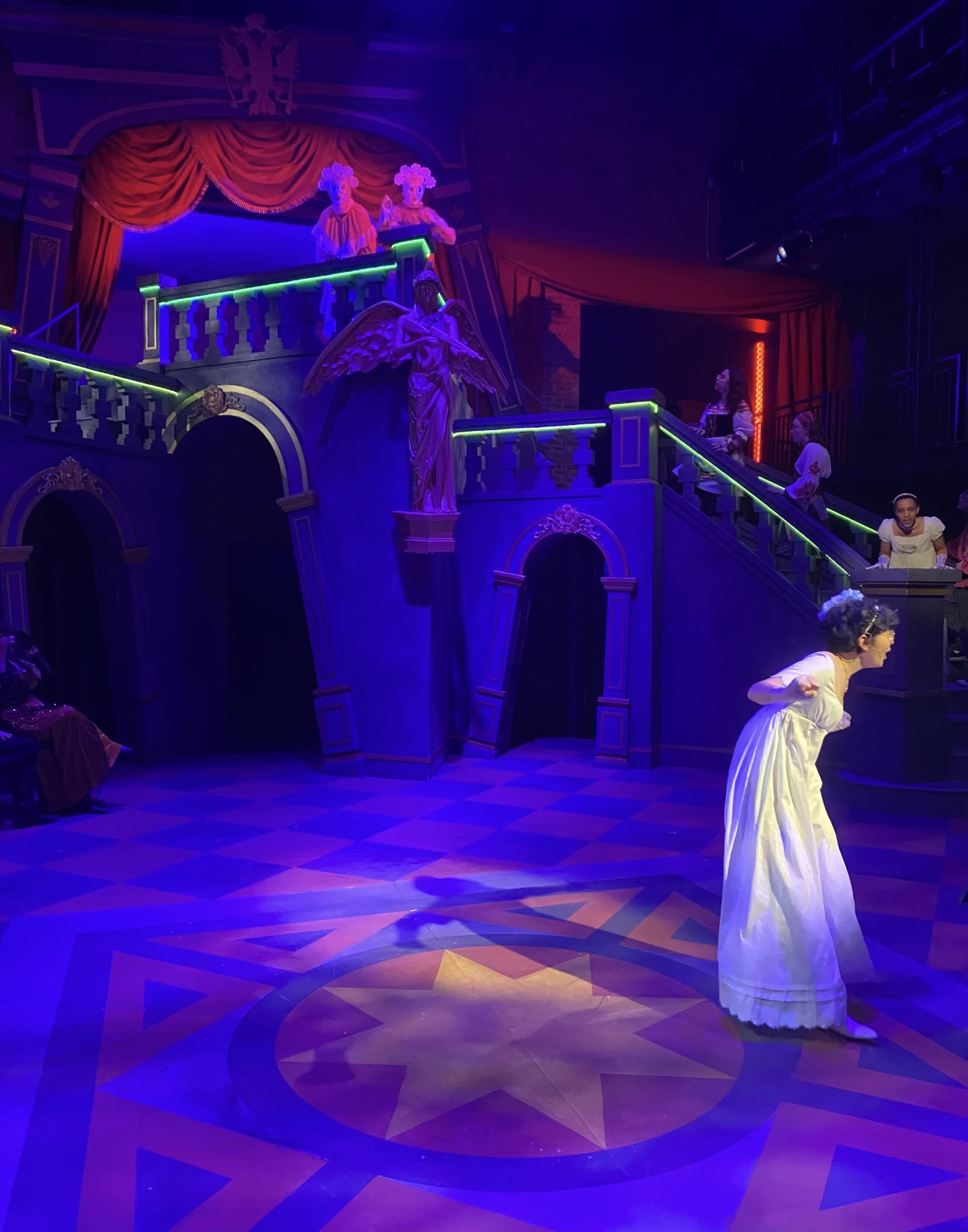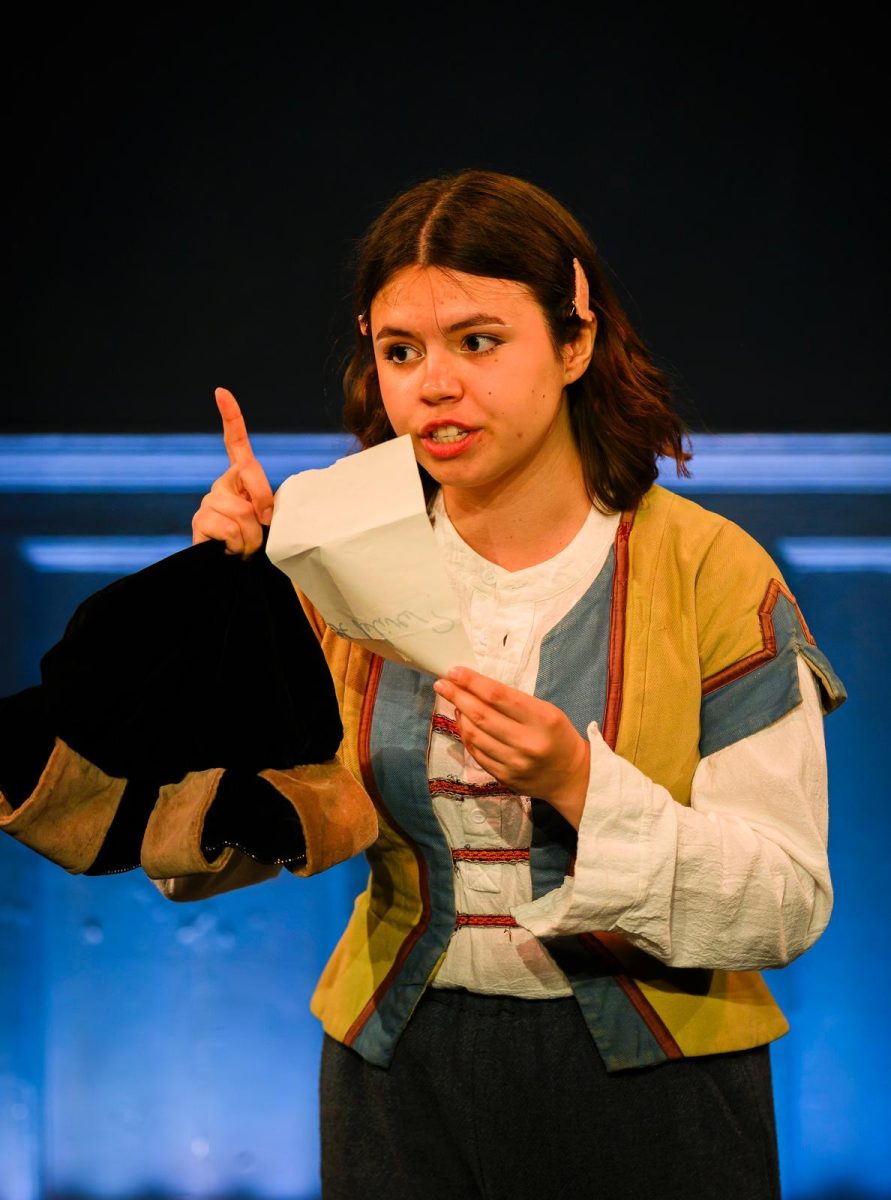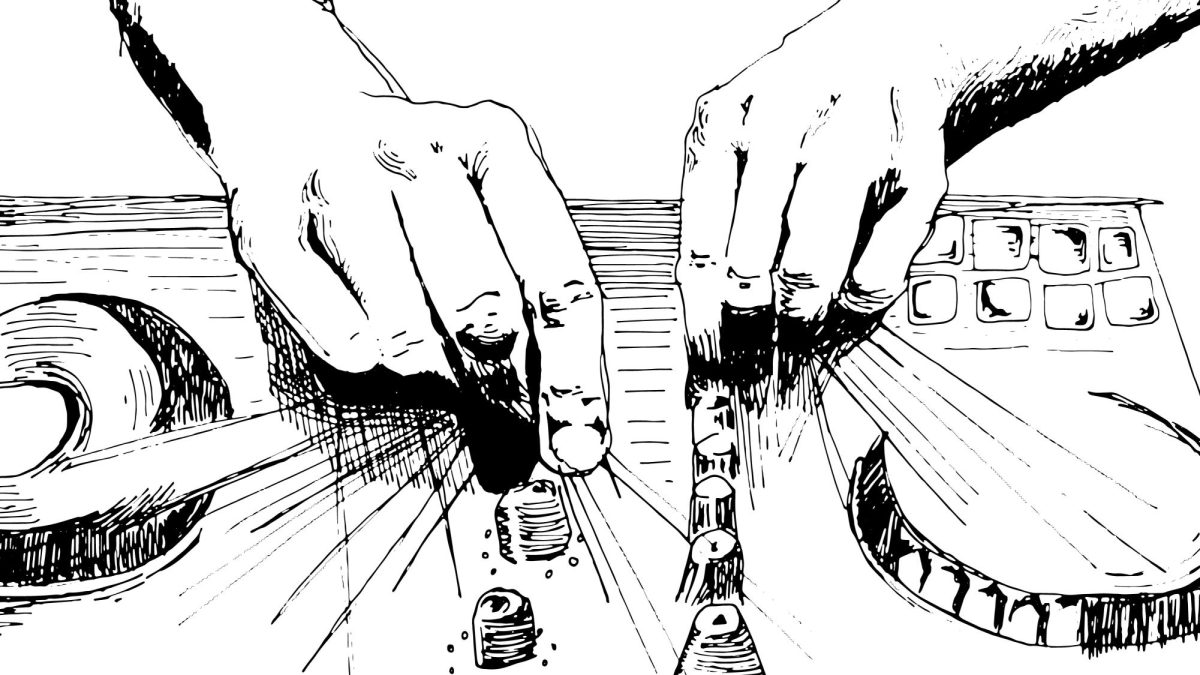
The theatre department will perform its first musical in a decade, Dave Malloy’s Natasha, Pierre & The Great Comet of 1812, this weekend. The show, an electropop opera adaptation of a 70-page segment from Leo Tolstoy’s novel War and Peace, will be directed by Visiting Assistant Professor of Theatre Jessica Pearson-Bleyer and musically directed by Cedric Lyles, who was brought in by the College for the production.
The show follows Natasha, played by Sara Stebbins ’24, whose social reputation is destroyed by an affair during a trip to Moscow. After this incident ruins her engagement, lonely outsider Pierre, played by Ben Zobian ’27, is the key to Natasha’s redemption and his own personal renewal, leading to the start of a friendship that teases their future marriage in the original novel.
Director Pearson-Bleyer was particularly drawn to The Great Comet because of its blend of historicity and modernity, she told the Record. As a historian of musical theatre, Pearson-Bleyer said her background informed her directorial choices. “It’s been really great to be able to pull from the actual history,” she said. “Like, ‘Hey, this is the historical record, this is what Tolstoy said, this is what Dave Molloy said, and this is what we’re gonna do.’”
The Great Comet is one of the largest productions the department has put on in recent years, with a cast of about 20 students, Pearson-Bleyer said. While the large cast has made the rehearsal process more complicated, Pearson-Bleyer explained, it has also allowed for students with a variety of musical backgrounds to get involved, as the show has roles for many different vocal styles, including those for people who are not trained in musical theatre singing or have a pop background. “We’ve been able to have a lot of fun playing around with style a little bit in the rehearsal room,” Pearson-Bleyer said.
“It’s really fun playing Natasha, thinking about the journey she goes through in a really short amount of time,” Stebbins said. “She’s very all-or-nothing… Everything she feels, she feels 100 percent, and that sometimes manifests as this really happy exuberant thing, but when something is going wrong, it’s over.”
In many ways, Pierre is Natasha’s foil. “His story arc is going from feeling like he’s alone and no one understands him to meeting Natasha and realizing that he’s found his kindred spirit,” Zobian said.
Assistant director Sari Klainberg ’25 — who has directed for both the theatre department and the student-run group Cap & Bells — said she was able to take on more directorial responsibility than in past productions she has worked on. The show features a scene where the characters watch an opera, so Pearson-Bleyer tasked Klainberg with staging the opera. “It’s been really wonderful to have someone that I can view as a collaborator, and I’ve been able to actually give her tasks,” Pearson-Bleyer said. “That’s not something I generally feel comfortable doing, but she came in with a lot of experience.”
Stebbins also highlighted the flexibility and collaboration involved in the rehearsal process. “There is definitely a spontaneous element to it that I think is really beautiful,” they said. “When we were first putting the show on the stage, [Pearson-Bleyer] would tell us where to stand and maybe give us a few details about what she wanted to happen, but she would pretty much let us figure out what it was going to be in the space.”
This method of improvisation often gave rise to serendipitous additions to the show. In one instance, two ensemble characters — played by Miriam Silver ’27 and Hailey Brown ’24 — accidentally dropped luggage when moving it across the stage, making the other performers laugh. “Everyone responded to it in character, and it just gave the scene so much energy that we ended up keeping that moment in the show,” Stebbins said.
The show’s lively energy manifests from the eclectic nature of the show’s musical styles — from pop to traditional opera to techno, Pearson-Bleyer said. The music plays with temporality, which the department’s production has leaned into, she added.
Despite the show’s energetic and comedic elements, it ultimately deals with the inescapable truth of war. “At Williams, we are so isolated sometimes that it feels as if we aren’t connected to the liberation of others, and that we aren’t connected to those who aren’t being treated with the privilege and empathy that we are,” Klainberg said. “I think that as an overarching theme for us to bring into this is incredibly important.”
For both the cast members and the production team, the interpretive work behind-the-scenes of the show has singled out this production from other versions of the musical, as well as from War and Peace itself.
“We were explicitly not told to read the book for the show … so we could create our own characters,” Zobian said. “If people want the Pierre, they’ll read the book, or the Natasha, they’ll read the book, but part of the beauty of musical theatre is doing things for ourselves. We’ve seen Josh Groban’s Pierre, we’ve seen Denée [Benton’s] Natasha, but we haven’t seen Williams’ Pierre and Williams’ Natasha.”
Above all else, members of the musical’s production team expressed their excitement — both to show a semester of hard work off to the campus and for the intricacy of the production elements.
“It’s gonna be really really exciting — the sets and the lighting and the costumes and everything,” Stebbins said. “We just did our first tech rehearsal last night, and everything looks so luxurious and beautiful and over the top. It’s so cool.”
“This is what happens when you give money to arts organizations,” Klainberg said. “We can knock your socks off.”
Natasha, Pierre & The Great Comet of 1812 premieres on April 25 and will run until April 27 at the ’62 Center for Theatre & Dance.
[Editor’s note: Yona Kruger, who is an editor for the Record and plays Princess Mary in Natasha, Pierre & The Great Comet of 1812, was not involved in the writing or editing of this article.]







